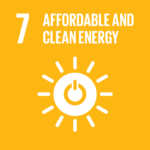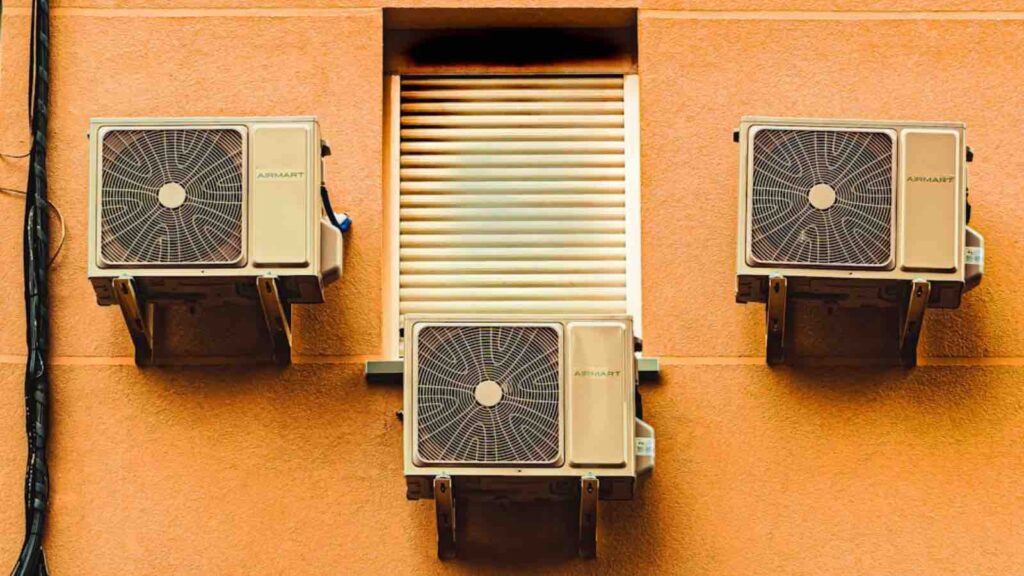A blistering heat wave is gripping Southeast Asia, putting a strain on power resources. With more people seeking respite from the heat in air-conditioned comfort, power consumption in Thailand and Vietnam has hit record highs.
A severe heatwave is currently gripping Southeast Asia, stretching power grids to their limits as citizens turn up their air conditioners in search of relief. In Thailand and Vietnam, this surge in demand for cool air has driven power consumption to record-breaking levels. Vietnam’s state electricity company, EVN, is urging residents to moderate their air conditioning use to help prevent potential power shortages.
RELEVANT SUSTAINABLE GOALS



PH heat drives power supply alerts
In the Philippines, the demand spike has overwhelmed the power system, according to President Marcos. These unprecedented power demands are not just a discomfort but are affecting the entire region’s energy stability. Both Thailand, Vietnam, the Philippines, and Myanmar are facing challenges as air conditioning usage soars amid the scorching heat, stressing their electrical grids.
The increased power demand has also led to a rise in coal and LNG orders as countries scramble to avoid blackouts. “If we experience conditions similar to last year, Thailand may have to significantly increase gas combustion for power and step up energy imports from Laos if hydropower generation dips with the rising temperatures,” said Tristan Pheh, an analyst at Rystad Energy.
Vietnam’s new record power consumption
Vietnam has reported new records in electricity consumption, with EVN recording a peak power usage of 47,670 megawatts in a single day. The northern regions of Vietnam, experiencing their first heatwave of the year, have not yet broken records but are seeing a significant rise in power use, with temperatures in some areas soaring to 40 degrees Celsius.
Utility Vietnam Electricity (EVN) is proactively adjusting its power supply strategy for the dry season, expecting higher demand from April through July. This plan includes tapping into diverse power sources and maintaining high reservoir levels to ensure a steady power supply. Major projects are underway to expand the national grid, including the Ialy and Hoa Binh hydropower projects, along with new thermal and hydropower expansions in central and southern Vietnam.
Additionally, EVN is calling for prudent electricity use, particularly during peak evening hours from 7:00 pm to 11:00 pm, to help stabilize the grid and manage the energy demand more effectively during this challenging period.
Surging Heatwave Spurs Record Demand for Electricity and Natural Gas in Southeast Asia
In the wake of a scorching heatwave sweeping across Southeast Asia, nations are grappling with unprecedented demands for cooling, pushing power systems to their limits and sparking a sudden surge in natural gas consumption. Philippine President Ferdinand Marcos Jr. highlighted the crisis on Monday, noting that the intense heat has dramatically increased electricity usage, leading to an overloaded power system.
Data from the Thai Meteorological Department reveals that over 30 of Thailand’s 77 provinces set new temperature records in April, with some figures surpassing records held since 1958. On Monday April 29, Thailand’s electricity consumption soared to a new record of 36,699 megawatts, as reported by the National Energy Supervisory Authority’s website. Remarkably, this marks the third time in just one week that power demand in Thailand has surged to record levels.
Amidst these record-setting demands, Thailand’s state-owned energy company, PTT, has responded by purchasing a significant batch of spot liquefied natural gas. An informed trader disclosed that PTT is actively seeking additional supplies of liquefied natural gas to ensure adequate power generation during this critical period.
Similarly, in Vietnam, the national oil and gas company, PetroVietnam Gas, is preparing to acquire another batch of liquefied natural gas, scheduled for delivery in late May, to mitigate potential shortages.
The Vicious Cooling Cycle : How ASEAN’s Rising AC Use Is Heating Up the Climate
From 1990 to 2017, electricity consumption for air conditioning (AC) in ASEAN countries skyrocketed by 7.5 times, surpassing the total household electricity use of South Korea, according to the International Energy Agency (IEA). By 2040, if current policies persist, cooling could account for nearly 20% of total electricity use and 30% of peak demand in the region, necessitating an additional 200 gigawatts of power capacity—equivalent to Germany’s total capacity.
This surge in cooling demand feeds into a detrimental cycle known as the “Vicious Cooling Cycle.” As temperatures climb, the demand for AC and refrigerators increases, leading to higher emissions of greenhouse gases and hydrofluorocarbons from these cooling systems. This, in turn, drives further climate change and even higher temperatures, perpetuating the cycle.
The Innovations in The HVAC Industry
The lethality of a heatwave is influenced by several factors including age, health, and geographic location. Here’s how extreme heat can become fatal:
- Temperature Illusion: Often referred to as “mean radiant temperature,” this is the heat load one experiences from all surrounding radiation, not just air temperature. For example, while the air temperature in Phoenix might register at 40 degrees Celsius, the mean radiant temperature can soar to 56 degrees, reaching deadly thresholds.
- Dehydration: Prolonged exposure to heat can lead to severe dehydration, impairing the body’s ability to sweat and cool itself. Elevated body temperatures can cause proteins and cell membranes to malfunction, potentially leading to organ failure.
- Wet Bulb Danger: When humidity and temperature rise together, it can lead to high wet-bulb temperatures, which are especially dangerous because humans primarily cool off through sweating. If the body can’t sweat, organ failure and death can occur
Given these dangers, adapting our buildings with efficient heating, ventilation, and air conditioning (HVAC) systems isn’t just beneficial—it’s a matter of survival.
The HVAC sector is embracing sustainability through innovations that could significantly reduce energy consumption:
-
Energy Efficiency:
- Variable Speed Drives (VSDs) adjust fan speeds based on demand, conserving energy.
- Inverter Technology fine-tunes compressor operations, enhancing energy efficiency.
- Heat Recovery Ventilation (HRV) reclaims heat from exhaust to warm incoming air.
2. Smart HVAC Systems:
- Remote Control allows users to adjust settings via smartphone apps.
- Automated Scheduling tailors system operations to user preferences.
- Zoning Systems provide different temperature zones within a building to minimize waste.
3. Renewable Energy Integration:
- Solar-powered HVAC systems use rooftop solar panels to power units.
- Geothermal Heat Pumps utilize the earth’s stable underground temperature for efficient heating and cooling.
4. Indoor Air Quality (IAQ):
- Advanced Filtration Systems enhance air quality by removing pollutants.
- Air Purification Technologies, like UV germicidal irradiation, neutralize airborne pathogens.
As Asia faces unprecedented urban growth, rising temperatures, and increasing disposable incomes, the market for advanced HVAC systems offers robust business opportunities, signaling a hotbed of potential for innovative startups focused on sustainable solutions.
Lead image courtesy of Lo Jose Antonio Gallego Vázquez via Unsplash
You may also be interested in :
WMO Report Reveals Asia’s Severe Impact From Climate Change and Extreme Weather


